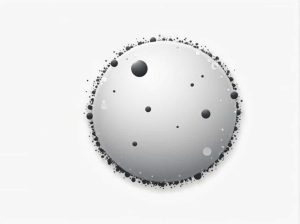Have you ever looked up at the night sky and noticed a star twinkling in different colors—red, blue, and green? This dazzling display is not caused by the star itself but by Earth’s atmosphere. In this topic, we’ll explore why stars appear to twinkle in multiple colors, what factors influence this effect, and which stars are most commonly seen changing colors.
Why Do Stars Twinkle?
The scientific term for twinkling is stellar scintillation. This effect occurs when light from a star passes through Earth’s turbulent atmosphere. As light moves through layers of air with different temperatures and densities, it bends in different directions, causing the star’s appearance to shift and flicker.
Why Do Stars Twinkle in Different Colors?
Stars do not actually change colors, but our atmosphere causes them to appear as if they do. This happens due to a phenomenon called atmospheric dispersion, where light waves of different colors bend by different amounts. Here’s how it works:
-
Refraction of Light
- The Earth’s atmosphere acts like a prism, splitting the starlight into different colors.
- Shorter wavelengths (blue and green) are bent more than longer wavelengths (red and orange).
-
Atmospheric Turbulence
- Winds and temperature variations in the atmosphere constantly shift the direction of the light.
- This causes the star to appear as if it is flickering between red, blue, and green.
-
Low Altitude Effect
- When a star is close to the horizon, its light has to pass through more of the Earth’s atmosphere.
- This increases the twinkling effect and makes color changes more noticeable.
Which Stars Twinkle in Multiple Colors?
While all stars twinkle, some are more prone to showing color changes due to their brightness and position in the sky. Here are some commonly observed stars that twinkle in red, blue, and green:
1. Sirius (Alpha Canis Majoris)
- Location: Canis Major
- Reason for Twinkling Colors: Brightest star in the night sky, making the atmospheric effects more noticeable.
- Common Colors Seen: Red, blue, green, yellow
2. Betelgeuse (Alpha Orionis)
- Location: Orion
- Reason for Twinkling Colors: A bright red supergiant near the horizon for many observers.
- Common Colors Seen: Deep red, orange, sometimes green or blue
3. Capella (Alpha Aurigae)
- Location: Auriga
- Reason for Twinkling Colors: A yellow giant star that can appear as flashing red and green when close to the horizon.
- Common Colors Seen: Yellow, red, green
How Does the Atmosphere Affect Twinkling?
The amount of twinkling and color variation depends on several atmospheric conditions:
1. Air Turbulence
- On nights with unstable air, twinkling is more intense.
- Calm nights with steady air reduce the effect.
2. Humidity and Temperature Variations
- More humidity and temperature shifts increase light refraction.
3. Altitude of the Star
- Stars closer to the horizon twinkle more due to the thicker atmospheric layer.
- Stars high overhead twinkle less.
How to Reduce Twinkling When Observing Stars
If you’re using a telescope or just want a clearer view of the stars, here are some tips to reduce twinkling:
1. Observe Stars Higher in the Sky
- Stars near the zenith (directly overhead) pass through less atmosphere, so they twinkle less.
2. Choose a Night with Stable Air
- Cold, dry nights with minimal wind provide the best viewing conditions.
3. Use a Telescope with an Aperture Mask
- This helps reduce the effects of atmospheric turbulence.
Do Planets Twinkle Like Stars?
Unlike stars, planets do not twinkle as much. This is because:
- Planets are closer to Earth and appear as discs rather than points of light.
- Their light passes through more layers of atmosphere, averaging out the effects of twinkling.
- However, when a planet is low on the horizon, it may appear to shimmer slightly.
The twinkling of stars in red, blue, and green is a beautiful effect caused by Earth’s atmosphere. While the stars themselves do not change colors, the bending and scattering of light create a dazzling display. Next time you see a star flickering in different colors, you’ll know that it’s the Earth’s atmosphere putting on a show.



